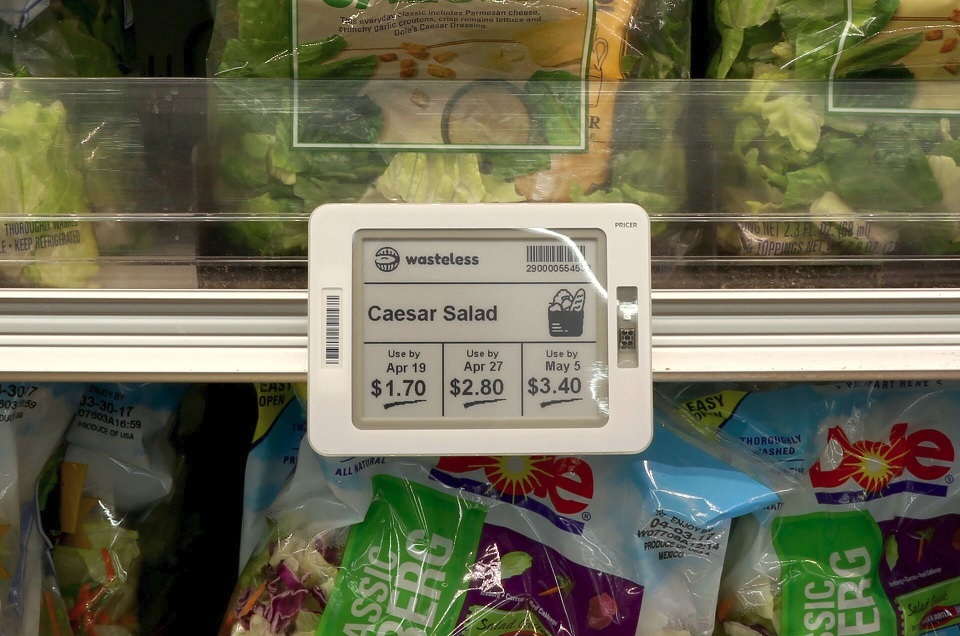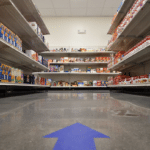
How many times do you reach for the last item in the back of the grocery shelf, trying to grab the product with the longest expiration date – even if you’re planning on using it well before then? If everyone did that, then the older products in front may never sell before they expire.
But what if those older products were cheaper?
A new startup called Wasteless is pitching technology that allows grocers to offer dynamic pricing based on a product’s expiration date – the closer it is to going out of date, the cheaper it will be.
“Wasteless allows supermarkets to sell more and waste less,” the company said in its official launch announcement.
The system actually relies on three separate technologies bundled into one. The first is a “dynamic pricing engine”, which determines how much to charge for a particular item at a particular time. Second is a radio-frequency (RFID) tag attached to each product, which serves as a high-tech price tag. And the third is electronic shelf labels, which display the items’ price.
Or prices.
Shoppers will be given the option of paying more for a fresher product, or paying less for a product that expires sooner. The dynamic pricing engine will automatically adjust the price of older products and transmit that price to the items’ RFID tags, which then communicate with the stores’ electronic shelf labels to display the different prices.
“Shoppers can then select a product that expires in two to three weeks for the regular price, or a product that expires in one to three days for a fraction of the price,” Wasteless explains.
In many stores, soon-to-expire products often end up in the clearance section, or they might have coupons attached to them to help them sell. Target, meanwhile, recently experimented with charging less for perishables that have been around just a little too long. So the notion of charging less for products that are less fresh is not an entirely new one.
But Wasteless aims to automate the whole process, and make variable pricing a commonplace occurrence in the grocery store.
And the technology can do more than just monitor expiration dates. It keeps track of stock levels, alerting stores if they’re running low on a product, so they don’t end up with empty shelves. And the dynamic pricing engine considers 43 separate factors, including supply, demand, location, holidays and time of day, when calculating a product’s price.
“Dynamic pricing is something used daily when booking a flight, a hotel, or an Uber, and there is no reason why our groceries should be different,” said Wasteless founder Ben Biron. When applied to groceries, “it means lower prices for the consumer, more revenue for the supermarket, and of course, it saves our planet by significantly reducing food waste.”
“Several retailers”, as yet unnamed, are testing the system, Wasteless says. But implementing it isn’t easy, for those that don’t already have at least some of the system’s pieces in place.
And few grocers do. RFID tags have a lot of potential, in inventory management and in allowing you to pay without stopping to scan your items. But it’s been slow to catch on, partly due to the cost and labor involved in affixing tags to every product in the store. And electronic shelf labels are more common overseas than they are in the U.S., where few grocers other than Whole Foods use them on a large scale.
So could this be a high-tech solution that’s just a little ahead of its time? Perhaps, but Wasteless would argue that anyone who adopts the system might find that it eventually pays for itself. The company cites figures that U.S. grocers lose an average of $2,300 per store, per day, from out-of-date food that never gets sold. That adds up to a $57 billion annual loss to the industry, combined with $47 billion in lost sales due to out-of-stocks.
That’s more than $100 billion in annual losses that Wasteless says it can help prevent. And if even a tiny fraction of that amount ends up in your pocket, in the form of lower prices on hard-to-sell products, then it may be worth watching to see if Wasteless will help you spend less, at a store near you.
Image source: Wasteless










